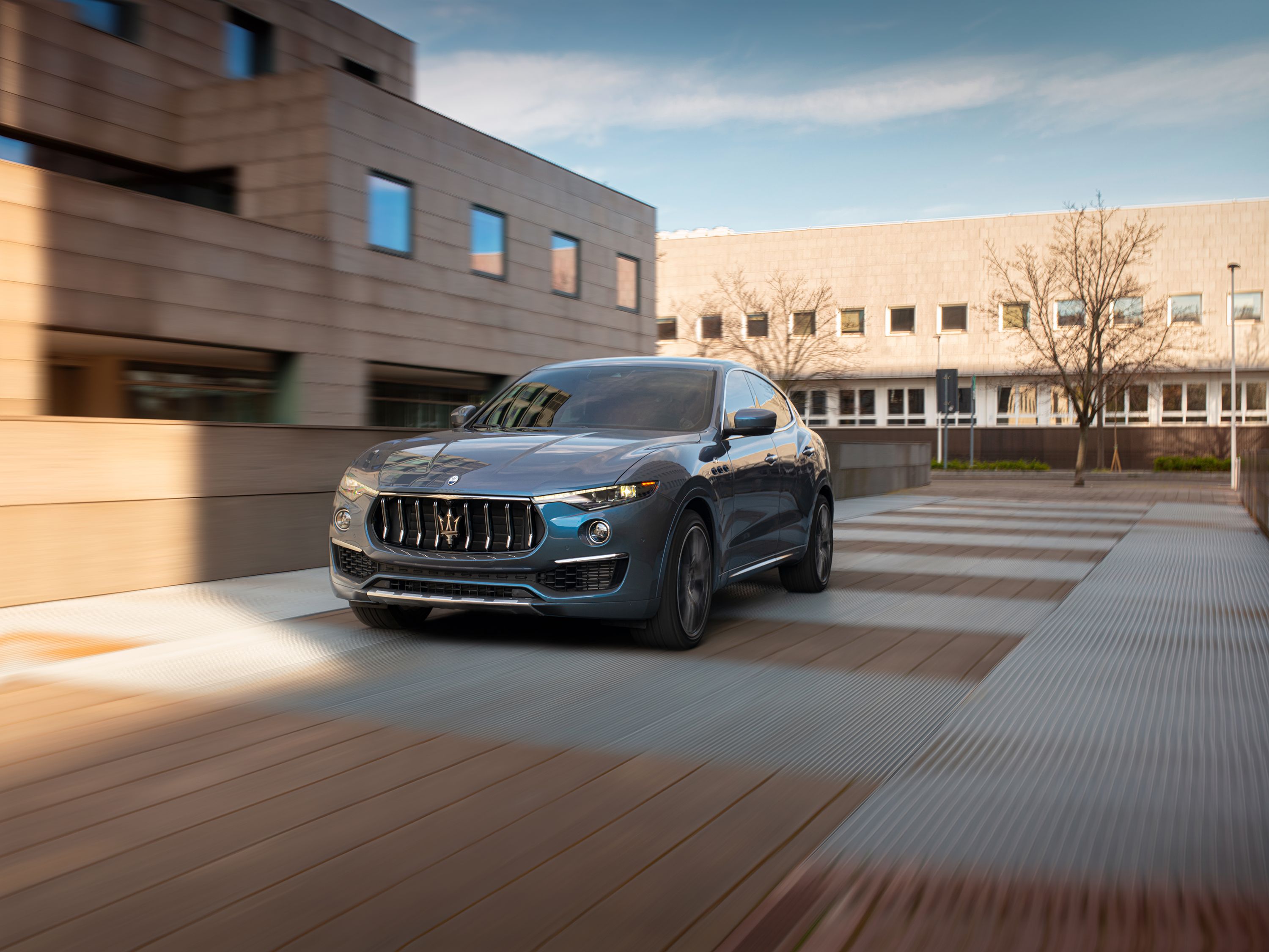
The Maserati brothers, Carlo, Bindo, Mario, Ettore and Ernesto, all had a hand in turning the family name into an automotive marque. The brothers chiefly built race cars until 1926, when Alfieri drove the first Masarati badged car to victory in the 1926 Targa Florio endurance race. Masarati soon became renowned for both its sports cars and race cars before its reputation as a luxury car maker took hold.
Compared to the other high-end Italian automakers, Maserati doesn't often show off concepts to the public. That means that when the Italian brand does put a concept out, the world pays attention. Mix that with Maserati's long-standing relationships with Italian design houses and coachbuilders, and you have a small but mighty collection of concept cars from over the decades.
Maserati Boomerang
In 1972, the Masarati Boomerang drew an incredible amount of attention at the Geneva Motor Show with its sharp creases and wedge-shaped design. Although we're now used to seeing 1970s concepts in the same vein, it was considered irreverent at the time. It is rumored to have been entirely penned by Giorgetto Giugiaro using a ruler, although the wheel arches make that demonstrably untrue. However, everything else is made of straight lines and sharp angles that have gone out of design fashion since but still make the Boomerang a compelling concept to look at now.
Maserati A8 GCS Touring
When Masarati made its plans clear to bring out a new sportscar in the early 2000s, Italian styling houses lined up to try and get in on the act. At the time, Carrozzeria Touring Superleggera was back in business, and the coachbuilder's pitch was the A8 GCS. The retro angle of the A8 GCS Touring looks back at the Pininfarina-designed A6 GCS from 1954, but the aim was to develop something timeless and unrestricted by fashion. It was based around the Maserati GranSport chassis and its 4.2-liter V8 engine that produced 385 horsepower.
Maserati Birdcage 75
Back in the 1950s and early 1960s, Maserati's Birdcage race cars designed by Giulio Alfieri represented a revolution in sports car design. On the 75th anniversary of the Pininfarina design house, the coachbuilder showed off the Birdcage 75 concept for Maserati. It was built around the Maserati MC12 GT1, including its carbon fiber chassis and 700-hp Ferrari-derived V12 engine, and sits at just a meter tall. Highlights include the sculpted smooth flowing lines and massive glass canopy that covers the cockpit.
Maserati 320S
The Maserati 320S is a concept racing car in a barchetta body style based on the turn of the century Maserati 3200 GT. It was designed by Giorgetto Giugiaro of Italdesign and debuted at the 1998 Mondial de l'Automobile in Paris. The idea was to design a spec-racer series to help relaunch the Maserati name in the US. It's powered by a 4.0-liter naturally aspirated V8 said to have been a development of Ferarri's 360 Modena engine. The single-seater and was fully outfitted for racing with an exposed roll bar, a Sparco racing seat, six-point racing belts, a fire extinguishing system, and a wind deflector in front of the steering wheel.
Maserati Alfieri Concept
Revealed in 2014, the Alfieri Concept was touted to become a production car that would replace the Maserati GranTurismo. That hasn't happened, but Maserati revealed last year it still plans for the Alfieri to go to market in 2020, but as a plug-in hybrid with a V6 engine matched to an electrified all-wheel-drive system. According to Maserati, it will also have active torque vectoring and active aero to go with the lightweight construction techniques used to offset the extra drivetrain weight. Maserati also says it will hit 62 mph in just 2 seconds. According to Maserati's website, the reveal for a production model will be in May.
Maserati Kubang
The Maserati Kubang goes all the way back to 2003 as a GT wagon, a whole 13 years before production of the Levante started. Back then, the idea of Maserati diverging from racing and sports cars into SUVs was abhorrent. In 2011, Maserati updated the concept for the Frankfurt Auto Show, and it started to look like Maserati was serious about an SUV. The Kubang was successful enough in bringing traditional Maserati design elements to the utility vehicle that Maserati customers had been asking for. With the success of the Cayenne and subsequent premium and luxury SUVs, it all added up to Maserati starting production of the Levante in 2016.
Maserati Medici II
Back in the early 1970s, the luxury super saloon wasn't commonplace, but Giorgetto Giugiaro was hard at work trying to perfect it. The first Maserati Medici concept had odd proportions, and Giugiaro wasn't happy with it. The Maserati Medici II got him much closer to what he wanted with a luxurious leather and briarwood interior and longitudinally mounted 5.0-liter V8. Inside the 'businessman's Maserati' was a pair of armchairs in the back as well as a TV and radiophone. While we might frown at the Maserati Medici II now for its bulbous middle, some of its styling cues and concepts made it to the Quattroporte III, which was a remarkably successful car for the Italian automaker.
Maserati Chubasco
Towards the end of the late 1980s, Maserati lacked a flagship car. The Maserati Chubasco was planned to fill that slot, and the concept was incredibly ambitious. It used a competition-derived spine chassis layout and a complicated unequal length wishbone system for the suspension that featured inboard pushrod dampers at the front and pullrod units at the rear. Power was slated to come from an upgraded twin-turbocharged version of the 3.2-liter V8 from the Maserati Shamal and make around 430 horsepower.
Its shape and bodywork were from the pen of Marcello Gandini, who paid attention to airflow, most notably from the three front intakes that channeled air underneath the car and out through the rear bodywork.
